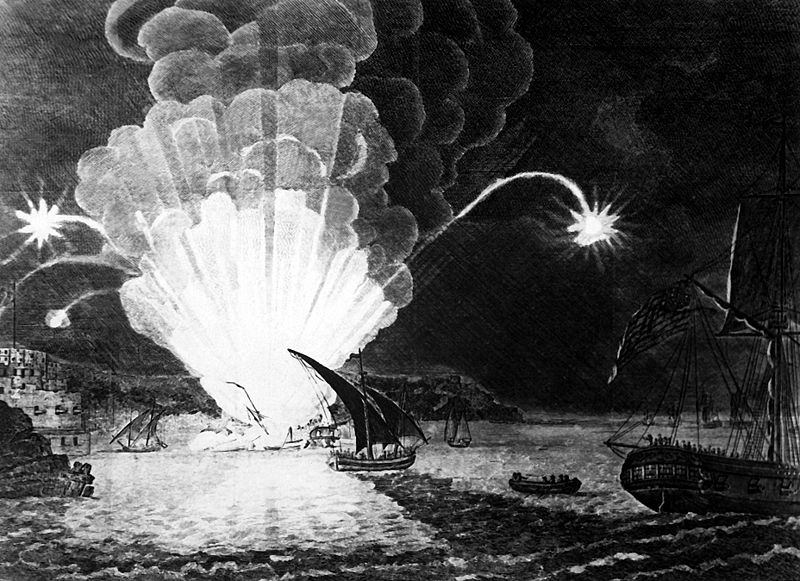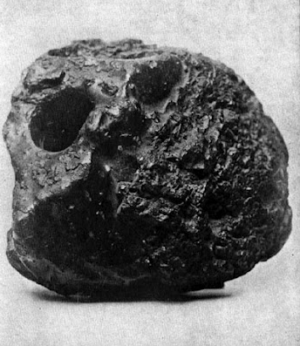I’m indebted to John C Wideman, author of an excellent and detailed study of US civil war IEDs for information about another ship-borne IED similar to those mentioned in an earlier blog post.
The USS Intrepid was a ketch, originally named the Mastico, captured from Tripoli (now in Libya) in the First Barbary War. The First Barbary War has its origins in interesting parallels with modern piracy.
In 1804, the Intrepid was converted into a “floating volcano”, to be sent into Tripoli harbour and blown up amidst the corsair fleet adjacent to the walls of the port’s fortress. The ketch was loaded with 150 artillery shells and 100 barrels of gunpowder. Burning fuzes with a 15 minute delay were attached. a crew of 11, led by Lt Richard Somers manned the vessel. On entering Tripoli harbour, it cane under intense fire, and was unable to manoeuvre towards the intended target. The 15 minute fuze proved unreliable and the ship detonated prematurely, killing the crew who had intended escaping by row boat.

USS Intrepid exploding in Tripoli Harbour
So, it can be seen, the explosively laden ship has been a repeated tactic, since 1584:
1584 – The explosion of the “Hoop”, Antwerp, against the invading Spanish Army. This incident remains, in my opinion the IED that has killed most victims in history, with 800 – 1000 killed. Tell me if I’m wrong.
1693 – The “Vesuvius”, used by the British under Admiral Benbow against St Malo
1694 – The Dieppe Raid, and raids against Dunkirk using the same technique
1804 – The Intrepid used by the American Navy against Tripoli, North Africa
1809 – Two explosive ships used by Admiral Cochrane, against the French, in the Basque Roads. Notably these had 15 minute fuses which exploded prematurely.
1864 – USS Louisiana, used in the US Civil war against Fort Fisher, Wilmington, N Carolina.
1918 – Zeebrugge raid, by the British Navy, using a submarine packed with explosives
1942 – HMS Campbelltown rammed into the dock gates in St Nazaire by the Royal Navy.



